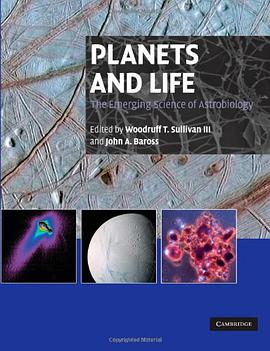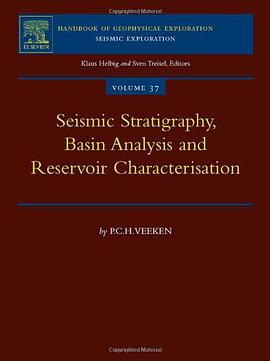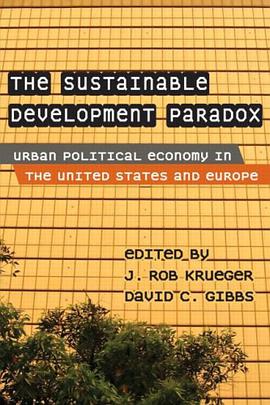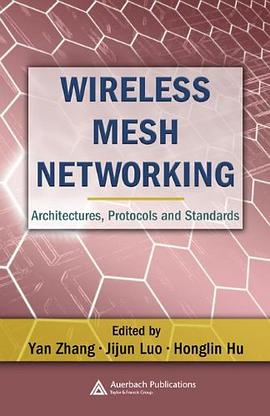

具体描述
Astrobiology involves the study of the origin and history of life on Earth, planets and moons where life may have arisen, and the search for extraterrestrial life. It combines the sciences of biology, chemistry, palaeontology, geology, planetary physics and astronomy. This textbook brings together world experts in each of these disciplines to provide the most comprehensive coverage of the field currently available. Topics cover the origin and evolution of life on Earth, the geological, physical and chemical conditions in which life might arise and the detection of extraterrestrial life on other planets and moons. The book also covers the history of our ideas on extraterrestrial life and the origin of life, as well as the ethical, philosophical and educational issues raised by astrobiology. Written to be accessible to students from diverse backgrounds, this text will be welcomed by advanced undergraduates and graduates who are taking astrobiology courses.
作者简介
目录信息
Preface xix
Prologue
The editors 1
PART I History 7
1 History of astrobiological ideas
Woodruff T. Sullivan, III & Diane Carney 9
1.1 Overview 9
1.2 Peopled worlds in antiquity and the Middle Ages 10
1.3 Copernicanism: Earth is a planet 11
1.4 Plurality of worlds: Fontenelle and his Conversations (1686) 12
1.5 Natural theology 15
1.6 Two nineteenth-century revolutions 16
1.7 Enter Mars 19
1.8 Ideas on extraterrestrial life, 1900–60 26
1.9 The beginning of SETI 30
1.10 Introduction to the history of ideas on the origin of life 33
1.11 Early ideas on spontaneous generation of life 34
1.12 The seventeenth- and eighteenth-century spontaneous generation debate 35
1.13 Pasteur vs. Pouchet: relegation of life’s origin to the past 37
1.14 Oparin and Haldane: origin of life as the domain of chemistry and physics 39
1.15 An early twenty-first-century approach to the origin of life 42
1.16 Conclusion 43
References 44
Further reading and surfing 45
2 From exobiology to astrobiology
Steven J. Dick 46
2.1 Cosmic evolution as a context for exobiology 46
2.2 The conceptual formation of exobiology 47
2.3 A new discipline 58
2.4 The broader significance of astrobiology 60
References 62
Further reading and surfing 64
PART II The origin of Earth-like planets and atmospheres 67
3 Formation of Earth-like habitable planets
Donald E. Brownlee & Monika E. Kress 69
3.1 Introduction 69
3.2 Habitable bodies for microbial life 69
3.3 Habitable zones for Earth-like planets 70
3.4 Other factors in habitability 72
3.5 Other planetary systems 74
3.6 Star formation 75
3.7 Building materials: element abundances 76
3.8 Organic compounds before Earth formed 78
3.9 Formation of planets 82
3.10 Comments and conclusions 88
References 89
Further reading and surfing 90
4 Planetary atmospheres and life
David Catling & James F. Kasting 91
4.1 Fundamentals of global climate 91
4.2 The faint young Sun problem 93
4.3 The coevolution of atmospheric oxygen and life 99
4.4 The prebiotic atmosphere 101
4.5 Effects of primitive life on the atmosphere 104
4.6 Geological evidence for the rise of oxygen 106
4.7 Models for the Earth’s atmospheric O2 history 109
4.8 Formation of an ozone ultraviolet shield 111
4.9 Advanced life and O2 on other Earth-like planets 111
4.10 Summary and conclusions 113
References 114
Further reading 116
PART III The origin of life on Earth 117
5 Does ‘life’ have a definition?
Carol E. Cleland & Christopher F. Chyba 119
5.1 Introduction 119
5.2 Attempts to define ‘life’ 119
5.3 Definitions 121
5.4 Natural kinds and theoretical identity statements 123
5.5 What is ‘life? 125
5.5 Appendix 5.1 Locke’s theory of meaning 127
5.5 Appendix 5.1 John Locke and Thomas Kuhn 128
5.5 Appendix 5.1 A new theory of meaning 128
References 129
Further reading and surfing 131
6 Origin of life: the crucial issues
Robert Shapiro 132
6.1 Why is this question important? 132
6.2 Historical background 134
6.3 The architecture of life 137
6.4 Central ideas about the origin of life 140
6.5 Replicator-first theories: life began with the random formation of a self-copying molecule 143
6.6 Pre-RNA World: another replicator preceded RNA as the genetic material 147
6.7 Metabolism-first theories 148
6.8 Prospects for a solution 150
References 151
Further reading and surfing 153
7 The origin of proteins and nucleic acids
Alonso Ricardo & Steven A. Benner 154
7.1 Carbon and biochemistry 155
7.2 Reactivity 155
7.3 Curved arrow mechanisms for the synthesis of biological molecules 157
7.4 Extraterrestrial sources of organic building blocks 160
7.5 Thermodynamic equilibria 166
7.6 Problems in origins and their partial solution 167
7.7 Final thoughts and future directions 171
References 172
8 The roots of metabolism
George D. Cody & James H. Scott 174
8.1 Introduction to cellular metabolism 174
8.2 The TCA cycle and its evolution 176
8.3 Two approaches to the emergence of the first metabolic pathways 178
8.4 Proto-metabolism and acetyl CoA synthesis 181
8.5 Proto-metabolism and mineral catalysts on the early Earth 183
8.6 Has primitive metabolic chemistry left us a ‘‘chemical fossil’’? 184
8.7 Summary 184
References 185
Further reading 186
9 The origin of cellular life
David W. Deamer 187
9.1 Introduction 187
9.2 The early Earth environment 187
9.3 The site of life’s origin 191
9.4 Organic carbon compounds on the early Earth 192
9.5 Sources of energy on the early Earth 194
9.6 The first cells 200
9.7 Membrane permeability 202
9.8 Encapsulation of macromolecules 203
9.9 A second origin of life in the laboratory? 205
9.10 Summary 206
References 206
Further reading 209
PART IV Life on Earth 211
10 Evolution: a defining feature of life
John A. Baross 213
10.1 From Lamarck to Darwin to the central dogma 213
10.2 Evolution at the molecular level 214
10.3 Mechanisms for acquiring new genes 216
10.4 Could there be life without evolution? 218
10.5 Evolution and extraterrestrial life 218
10.6 Summary 220
References 220
Further reading and surfing 221
11 Evolution of metabolism and early microbial communities
John A. Leigh, David A. Stahl, & James T. Staley 222
11.1 Introduction 222
11.2 The setting: conditions on early Earth 222
11.3 Evidence for the nature of early metabolisms 223
11.4 Contemporary metabolism: principles an astrobiologist needs to know 225
11.5 Early metabolic mechanisms 228
11.6 Evolution of methanogenesis and acetogenesis: the first metabolisms? 228
11.7 Counterpoint: sulfate respiration very early? 230
11.8 Evolution of photosynthesis 231
11.9 Aerobic metabolism 232
11.10 Earth’s earliest communities: microbial mats 232
11.11 Concluding thoughts 234
References 235
12 The earliest records of life on Earth
Roger Buick 237
12.1 Problems with the record 237
12.2 Types of evidence 240
12.3 The oldest evidence of life 254
12.4 Astrobiological implications 261
References 261
Further reading 264
13 The origin and diversification of eukaryotes
Mitchell L. Sogin, David J. Patterson, & Andrew McArthur 265
13.1 Introduction 265
13.2 Microbial diversity 265
13.3 Molecular phylogeny 266
13.4 Molecular ecology 267
13.5 Morphology and ultrastructure studies of protists 268
13.6 Molecular studies of protists 269
13.7 Future directions of ecogenomics 272
References 273
14 Limits of carbon life on Earth and elsewhere
John A. Baross, Julie A. Huber, & Matthew O. Schrenk 275
14.1 Introduction 275
14.2 Looking for Earth-like environments elsewhere 277
14.3 Extremophiles and the limits of life 278
14.4 Water, desiccation, and life in non-aqueous solvents 281
14.5 Temperature extremes 283
14.6 Survival while traveling through space 284
14.7 Extremophiles, hydrothermal vents, and Earth’s earliest microbes 286
14.8 Summary and future directions 289
References 289
Further reading 291
15 Life in ice
Jody W. Deming & Hajo Eicken 292
15.1 Introduction 292
15.2 Physics and chemistry of ice 295
15.3 Microbiology of ice 302
15.4 Summary and prospectus 309
References 311
Further reading and surfing 312
16 The evolution and diversification of life
Stanley M. Awramik & Kenneth J. McNamara 313
16.1 Introduction 313
16.2 The Proterozoic 313
16.3 The Phanerozoic 321
References 333
Further reading and surfing 334
17 Mass extinctions
Peter D. Ward 335
17.1 Introduction 335
17.2 Brief history 335
17.3 Studying mass extinctions 336
17.4 Earth’s mass extinctions: ten real or potential events 339
17.5 Causes of mass extinctions 341
17.6 Impacts and mass extinctions 345
17.7 Frequency of mass extinctions 348
17.8 Longer-term effects of mass extinctions 348
17.9 Severity of mass extinctions 349
17.10 Extinction risk through time 349
17.11 Two case histories 350
17.12 Closing 353
References 353
PART V Potentially habitable worlds 355
18 Mars
Bruce M. Jakosky, Frances Westall, & André Brack 357
18.1 Mars and astrobiology 357
18.2 Mars as a planet 358
18.3 Requirements for life to originate on a planet 359
18.4 The potential for life on Mars 360
18.5 Past searches for martian life 369
18.6 Searching for life on Mars 378
18.7 Concluding comments 382
18.8 Addendum: recent discoveries 382
References 384
19 Europa
Christopher F. Chyba & Cynthia B. Phillips 388
19.1 Introduction 388
19.2 Jupiter and its satellites 388
19.3 Tidal evolution, resonances, and heating in the Galilean moons 389
19.4 Europa’s space environment 392
19.5 Surface composition 394
19.6 Interior models 395
19.7 Europan geology 397
19.8 Heat transport and physics of the ice shell 401
19.9 Future means for detecting an ocean 403
19.10 Habitability of Europa 403
19.11 Europa as a possible analogue for early earth 407
19.12 An origin of life on Europa? 407
19.13 Searching for life 409
19.14 Europa and astrobiology 410
Appendix 19.1 Satellite tides and synchronous rotation 411
Appendix 19.2 Tidal circularization of orbits and nonsynchronous rotation 412
Appendix 19.3 Tidal heating 413
Appendix 19.4 Orbital resonance and the Laplace resonance 414
Appendix 19.5 Gravity and interior models 417
Appendix 19.6 Induced magnetic fields 417
Appendix 19.7 Heat conduction and convection 418
References 419
Further reading and surfing 423
20 Titan
Jonathan I. Lunine & Bashar Rizk 424
20.1 Introduction 424
20.2 Titan’s place in the Solar System 424
20.3 Titan’s atmosphere 426
20.4 Hydrocarbon chemistry and oceans 428
20.5 Earth-based remote sensing 429
20.6 The Cassini–Huygens Mission 430
20.7 Cassini–Huygens’s view of Titan 433
20.8 Future astrobiological exploration of Titan 439
20.9 Some astrobiological speculations 441
References 442
Further reading and surfing 443
21 Extrasolar planets
Paul Butler 444
21.1 Introduction 444
21.2 Stars 445
21.3 Extrasolar planet detection techniques 446
21.4 Classes of planets 450
21.5 Masses of extrasolar planets 454
21.6 Stellar metallicity and extrasolar planets 455
21.7 Future of extrasolar planet searches 456
References 457
Further surfing 458
PART VI Searching for extraterrestrial life 459
22 How to search for life on other worlds
Christopher P. McKay 461
22.1 Introduction and summary 461
22.2 Definitions for life 461
22.3 Requirements for life 462
22.4 Weird life 463
22.5 Establishing biological origin 464
22.6 Life is small 465
22.7 Movement and metabolism 465
22.8 Fossils: two case studies 466
22.9 Fossils are not enough 467
22.10 Global biology 468
22.11 Intelligent life 468
22.12 Searching Mars and Europa 468
22.13 Conclusion 470
References 471
23 Instruments and strategies for detecting extraterrestrial life
Pamela G. Conrad 473
23.1 Introduction 473
23.2 The Viking mission 474
23.3 The Mars Exploration Rovers 476
23.4 Approaches to collecting data 477
23.5 Instrumentation 478
23.6 Summary 481
References 482
24 Societal and ethical concerns
Margaret S. Race 483
24.1 Operating principles for astrobiology 483
24.2 Comparison of astrobiology with biotechnology 485
24.3 Examples from Mars exploration 488
24.4 Procedures following discovery of extraterrestrial life 494
24.5 The codependence of scientists and society 495
References 496
25 Planetary protection: microbial tourism and sample return
John D. Rummel 498
25.1 Introduction 498
25.2 Microbial tourists and invaders 498
25.3 A planetary protection policy 500
25.4 Recommendations to NASA on contamination control 502
25.5 How would Earth respond to an exotic life form? 504
25.6 Spacecraft sterilization 505
25.7 A sample handling protocol 508
25.8 Future considerations 509
References 511
Further reading and surfing 512
26 Searching for extraterrestrial intelligence
Jill C. Tarter 513
26.1 Technology, not intelligence 513
26.2 Which technologies? 513
26.3 The nine-dimensional cosmic haystack 516
26.4 How many technical civilizations might there be? 518
26.5 Search strategies 520
26.6 Current searches 525
26.7 Should we be transmitting? 530
26.8 Future searches 531
26.9 What if we succeed? 533
26.10 What if we don’t succeed? 534
References 535
Further reading and surfing 535
27 Alien biochemistries
Peter D. Ward & Steven A. Benner 537
27.1 Introduction 537
27.2 Life with different biopolymers 537
27.3 Life with a different solvent 539
27.4 Life using different elements 541
27.5 Life with a different architecture 542
27.6 Summary 542
References 543
Further reading 544
PART VII Future of astrobiology 545
28 Disciplinary aspirations and educational opportunities
Llyd Wells, John Armstrong, & Julie A. Huber 547
28.1 Astrobiology: a new discipline? 547
28.2 Astrobiology and ignorance 548
28.3 The UW graduate program 553
28.4 The future of astrobiology 556
References 557
Epilogue
Christopher F. Chyba 558
References 559
PART VIII Appendices 561
Appendix A Units and usages 563
A.1 Units 563
A.2 Usages 563
Appendix B Planetary properties 564
Appendix C The geological timescale
Stanley M. Awramik & Kenneth J. McNamara 566
References 568
Appendix D Astrobiological destinations on planet Earth
Jelte P. Harnmeijer (Ed.) 569
Introduction 569
D.1 Iceland
Steven Vance & Mark Claire 569
D.2 Yellowstone
Nicolas Pinel 570
D.3 Antarctica
Randall Perry 571
D.4 Hawai’i
Roger Buick 572
D.5 Darwin’s home
John Edwards & Woody Sullivan 573
D.6 Galápagos Islands
Julie Huber 574
D.7 Isua
Jelte P. Harnmeijer 575
D.8 Pilbara
Jelte P. Harnmeijer 576
D.9 Shark Bay
Jelte P. Harnmeijer 577
D.10 Arecibo radio telescope
Woody Sullivan 577
Appendix E The micro*scope web tool
David J. Patterson & Mitchell L. Sogin 579
E.1 Exploring knowledge space for microbes 579
E.2 Bridging phenotype and genotype databases 583
References 584
Index
· · · · · · (收起)
读后感
评分
评分
评分
评分
用户评价
这本还稍微好点儿=-= 但是这是谁建的啦哈哈哈哈哈
评分这本还稍微好点儿=-= 但是这是谁建的啦哈哈哈哈哈
评分这本还稍微好点儿=-= 但是这是谁建的啦哈哈哈哈哈
评分这本还稍微好点儿=-= 但是这是谁建的啦哈哈哈哈哈
评分这本还稍微好点儿=-= 但是这是谁建的啦哈哈哈哈哈
相关图书
本站所有内容均为互联网搜索引擎提供的公开搜索信息,本站不存储任何数据与内容,任何内容与数据均与本站无关,如有需要请联系相关搜索引擎包括但不限于百度,google,bing,sogou 等
© 2026 onlinetoolsland.com All Rights Reserved. 本本书屋 版权所有




















